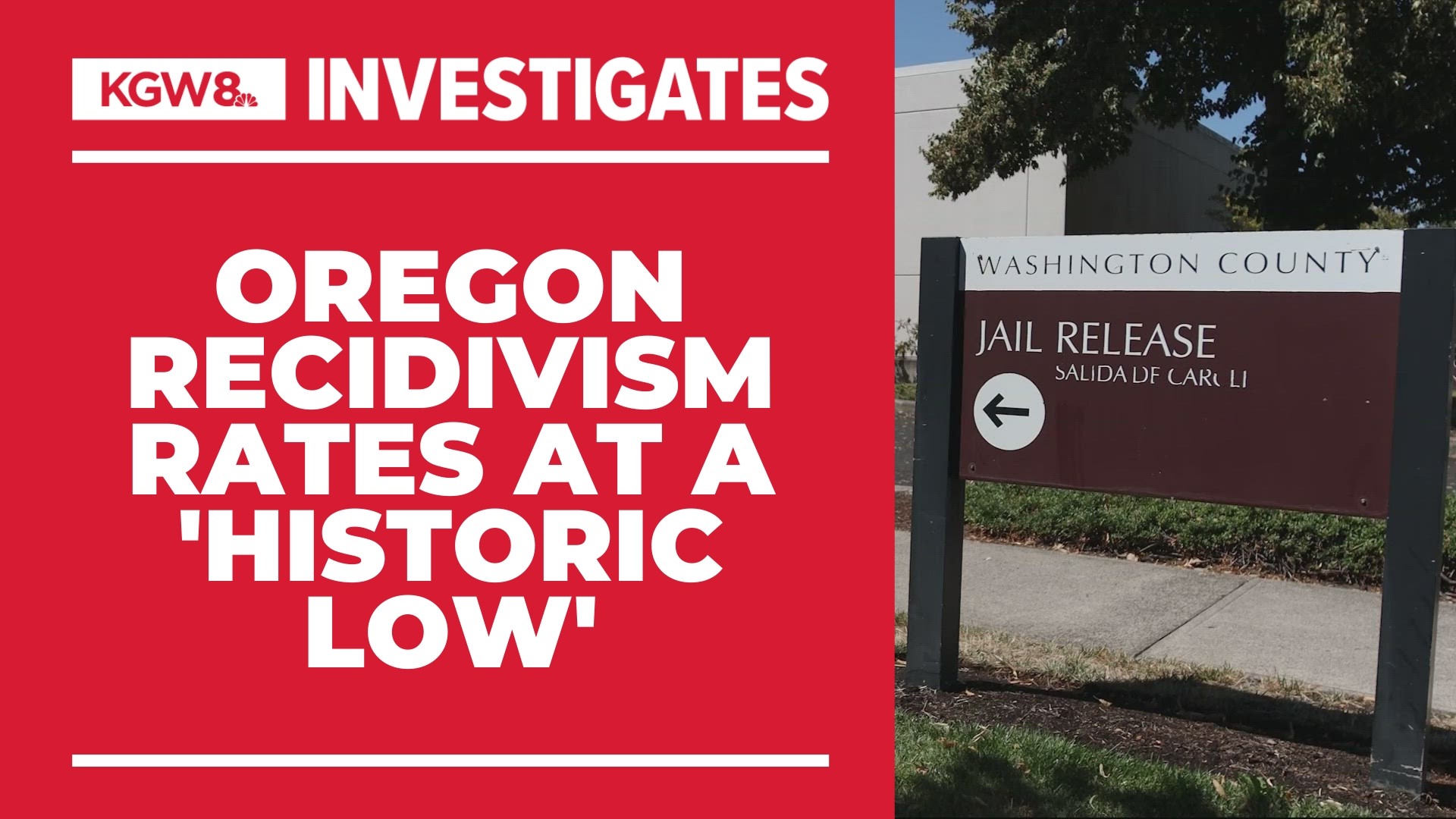SALEM, Ore. — About half of Oregon inmates who are released on parole or post-prison supervision are arrested again within three years, according to Oregon's Criminal Justice Commission. More than a third of the offenders are convicted for new crimes.
The likelihood of reoffending is in focus with the connected killings of four women in the greater Portland area. Investigators said they found a person of interest and news outlets have identified the potential suspect as Jesse Calhoun, a man whose sentence was commuted in June of 2021.
As it stands, no charges have been filed in the deaths of Kristin Smith, Charity Perry, Bridget Webster and Ashley Real. Calhoun was arrested in June on parole violations and is being held in state prison after Gov. Tina Kotek revoked his commutation.
To better understand recidivism statistics, KGW talked with Ken Sanchagrin, the executive director at the Oregon Criminal Justice Commission, the agency that tracks how often a convicted criminal goes on to commit a new crime once released.
"We normally look at three years because it takes time once folks are out to ensure they're able to comply with the rules of society," Sanchagrin said. "The reality is that being involved in criminality — sometimes you're going to have stumbles along the way to try to desist from crime."
Here's a glimpse at what CJC data shows:
- 51% of parole/post-prison supervision offenders were arrested again within three years of their release
- 35% were convicted again within three years
- 13.5% were incarcerated again within three years
Oregon's rates of recidivism are lower than the national averages most recently reported by the federal Bureau of Justice Statistics. In a survey of 34 states, BJS found:
- 62% of state prisoners were arrested again within three years of release
- 45% were convicted again within three years
- 39% were incarcerated again within three years
“We do feel like we're leaders in the country as far as re-entry services," Sanchagrin said. "In many cases we still have a long ways to go as evidenced by the numbers, but compared to some other states, we do feel like we're a little bit better positioned there."
However, the datasets are not perfectly comparable. The BJS report covers inmates released between 2012 and 2015, whereas the most recent Oregon CJC reporting covers 2019 to 2022.
Oregon's recidivism statistics — and recidivism throughout the country — decreased significantly during the pandemic, Sanchagrin said.
A May 2023 CJC report found that "recidivism rates in Oregon are at or near historic lows." Sanchagrin said the CJC found that Measure 110 and the decriminalization of drugs lowered recidivism rates by about 1% across the three categories, which he admitted was a smaller decrease than many thought they'd find.
Additionally, while lower recidivism rates might seem like good news, it's not necessarily because people are re-offending less often. They might not be getting arrested or convicted due to a shortage of police officers and public defenders — two areas that Sanchagrin pointed to when explaining the pandemic-era decrease.
"We've heard from law enforcement partners the difficulties they have in hiring and so enforcement is something that is likely down," he said. "There were court slowdowns during the pandemic as well."
When surveying all offenders released in a 2016 cohort, with their 3-year recidivism timeframe ending before the pandemic, the CJC reported 55% were arrested again, 45% were convicted again, and 18% were incarcerated again — closer in line with national averages.
Sanchagrin said the conviction rate is the best way to measure success and failure in recidivism, and investment in rehabilitation is how to lower it.
“I think that it really demonstrates there needs to be continued support for re-entry programs, for monitoring, for skill development," he said. "It's tough to take somebody and to not provide them with enough services when they first come out and expect them to do really well, but the more services we can wrap around folks than the better outcomes we can expect."
The CJC is studying the recidivism rate of people released by former Governor Kate Brown during the COVID-19 pandemic. Brown commuted the sentences of more than a thousand inmates, most of whom were medically vulnerable or had only a few months left on their sentences.
"Those folks have performed as well, or maybe a few percentage points better than our standard release cohort," Sanchagrin said, referencing one-year recidivism statistics.
Brown also gave 12-month sentence reductions to 31 inmates who helped fight wildfires in 2020. One of those inmates was Calhoun, who was released 11 months early in July 2021. The first known disappearance of a woman connected to Calhoun, Kristin Smith, was reported in December 2022 — months after Calhoun's sentence would have ended even without a commutation.
KGW checked the court records of the 41 wildfire inmates. Ten of those inmates have been arrested for new felonies in the last two years, not including Calhoun.
The arrest data isn't directly comparable to recidivism statistics. While some inmates like Calhoun were released early, others had longer time to serve, so their sentences were reduced.
While the CJC is studying the recidivism of the hundreds of inmates Brown released in 2020, Sanchagrin said his office likely won’t study the 41 wildfire inmates — the staggered release times being one reason why.
"With (41), it's sometimes hard to generalize when you have small numbers compared to larger releases because a few folks can really skew the data," he said. "At the moment, we don't have plans to look at that."
Sanchagrin cautioned putting too much weight in recidivism data, although it's necessary to track.
“You know, recidivism is a single mark that measures failure, but it doesn't measure the positive improvements that people are making as they go through this desistance journey."

